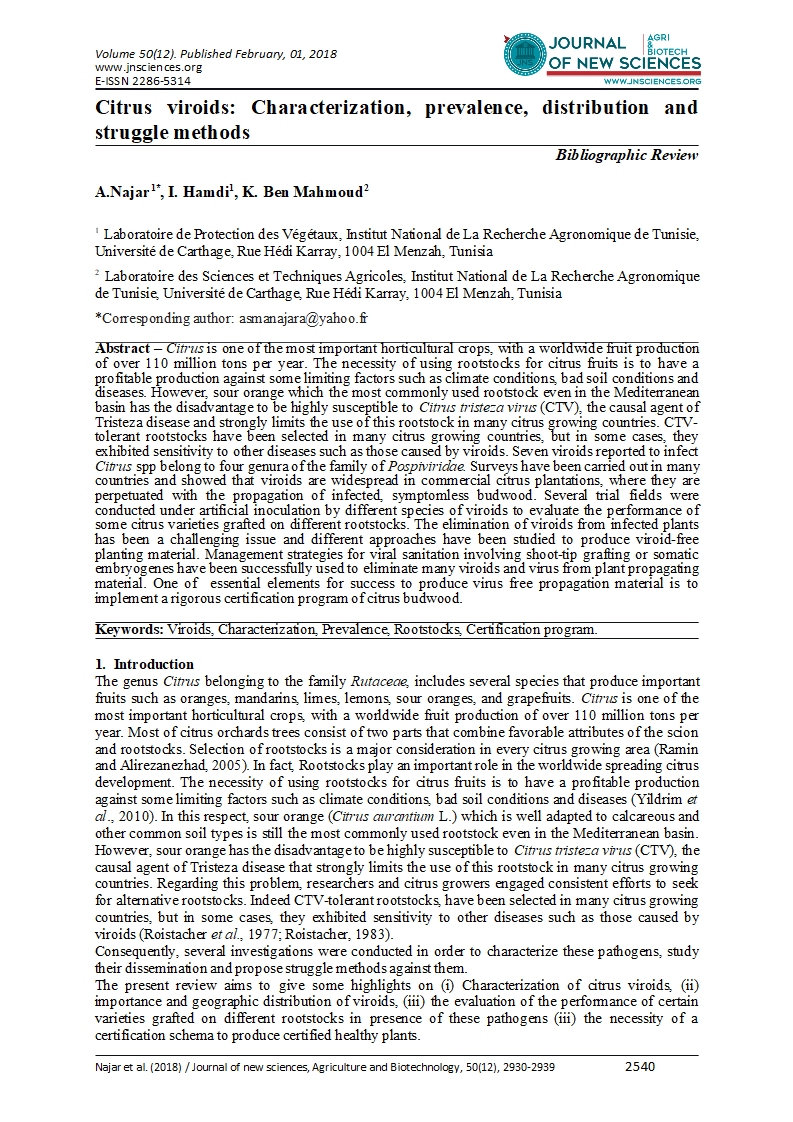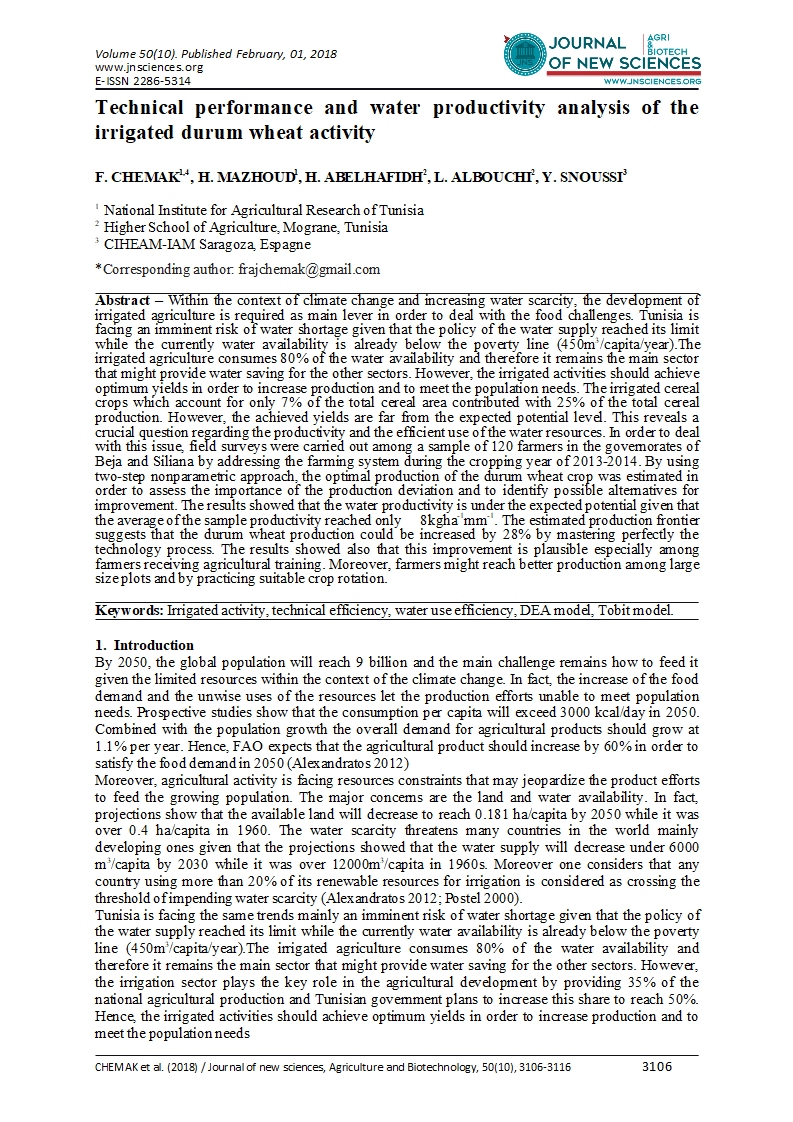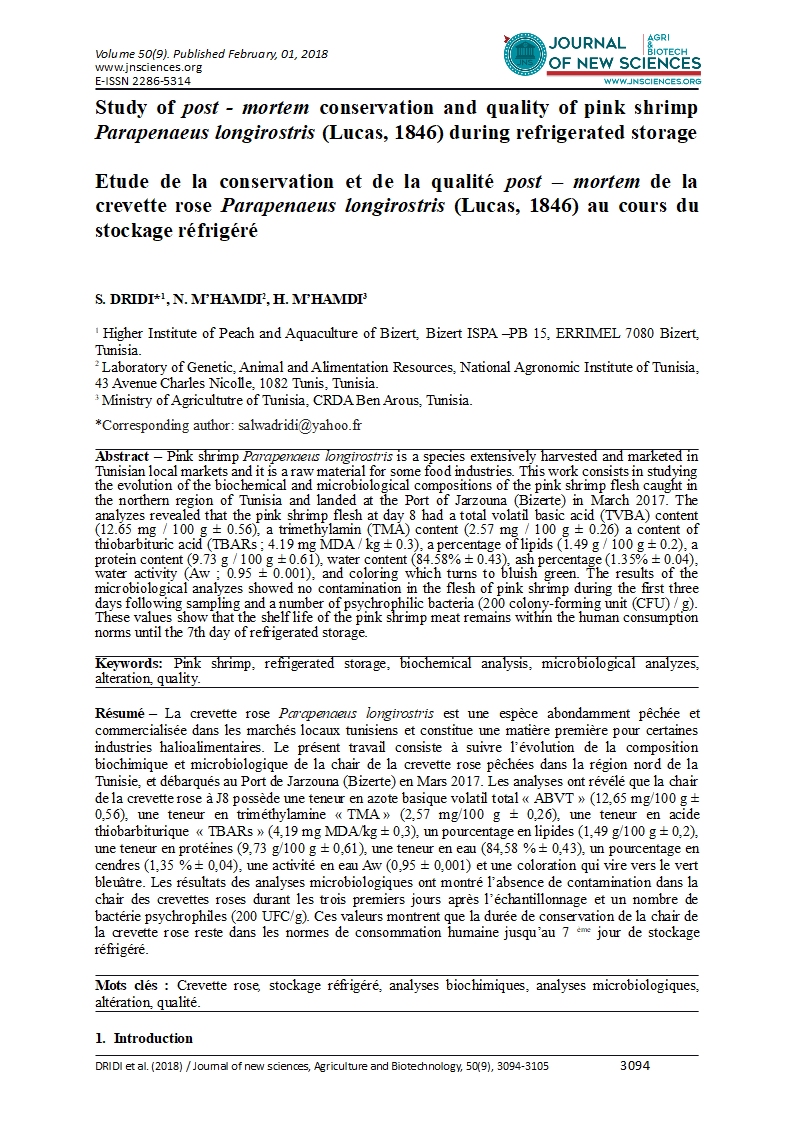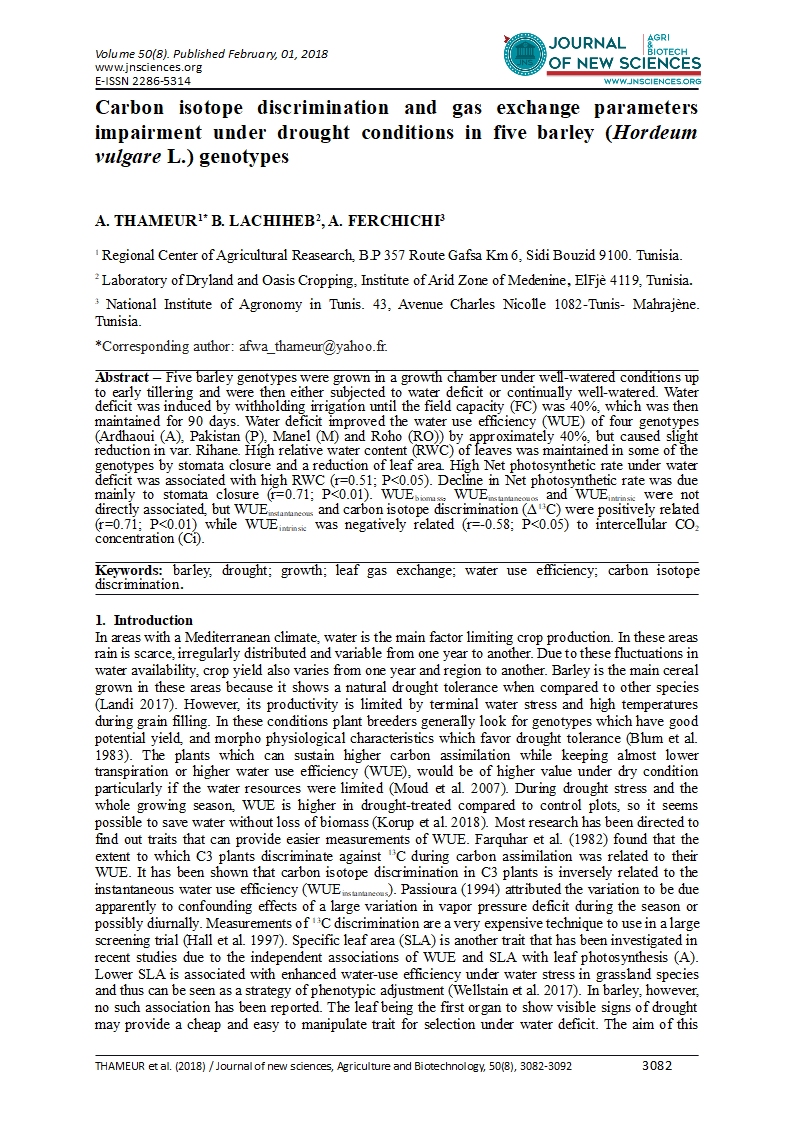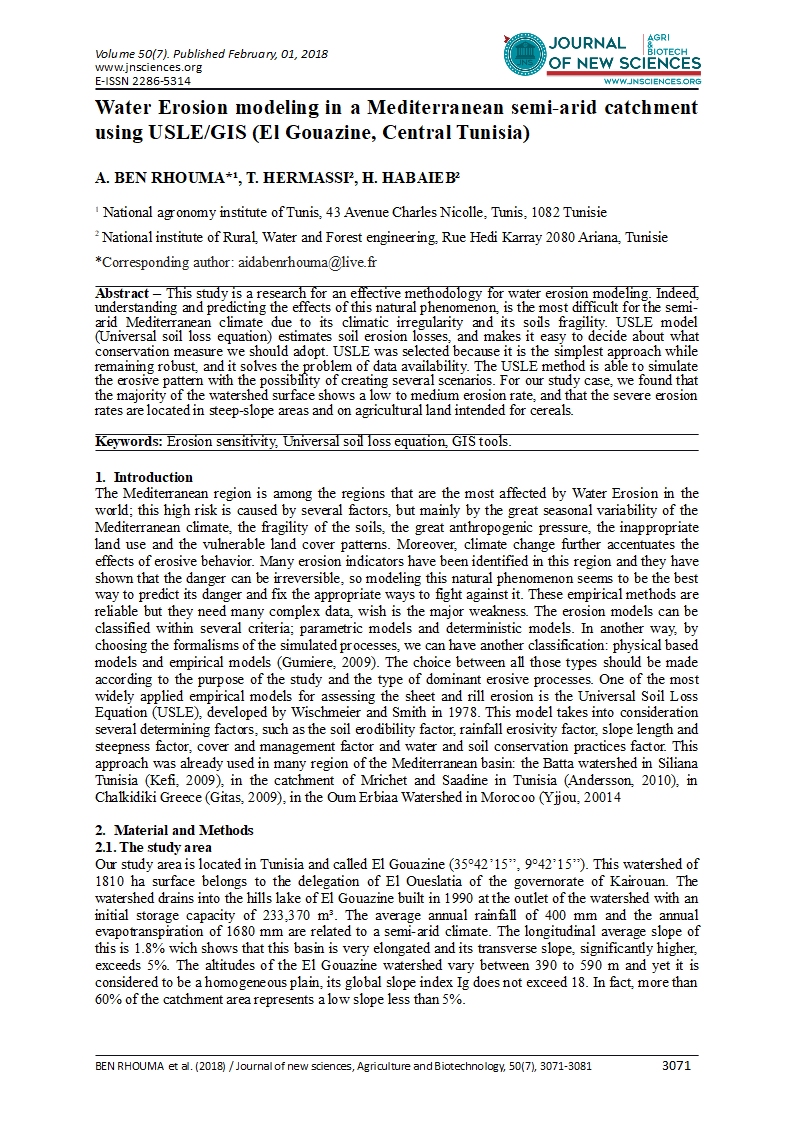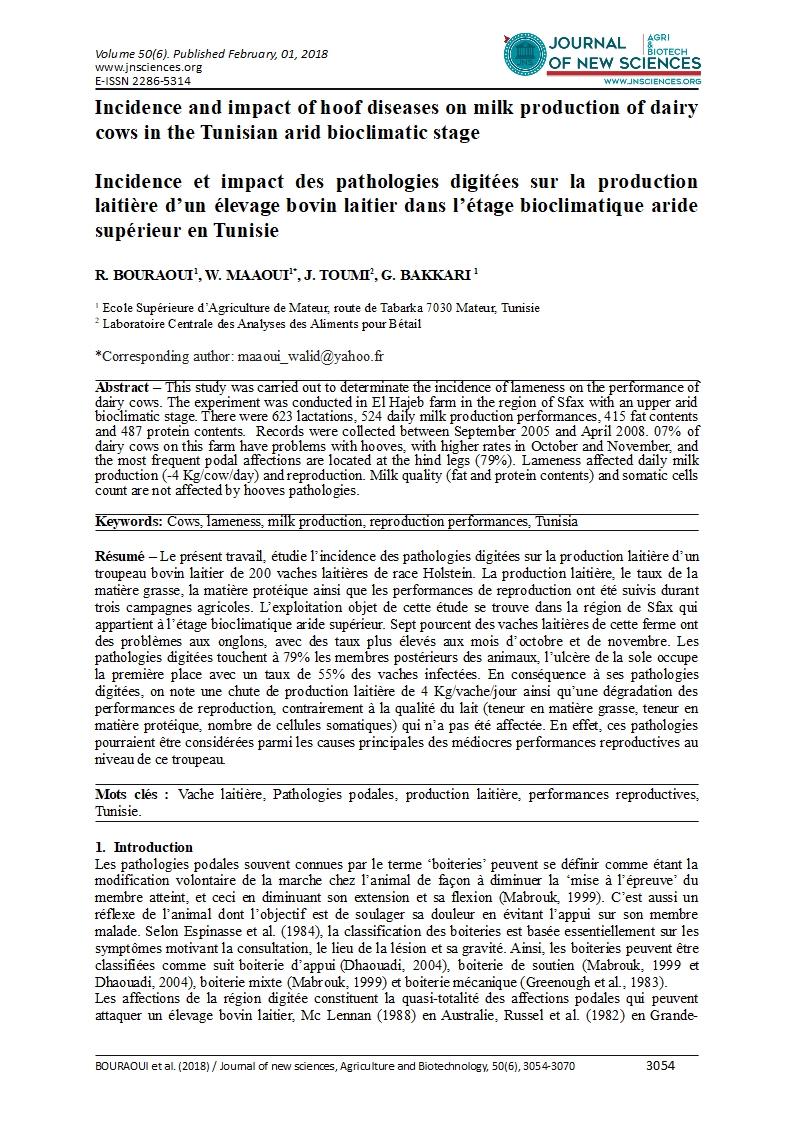- Category: Volume 50
- Hits: 5603
Assessment of waste biodegradability and composts stability by the Respirometry
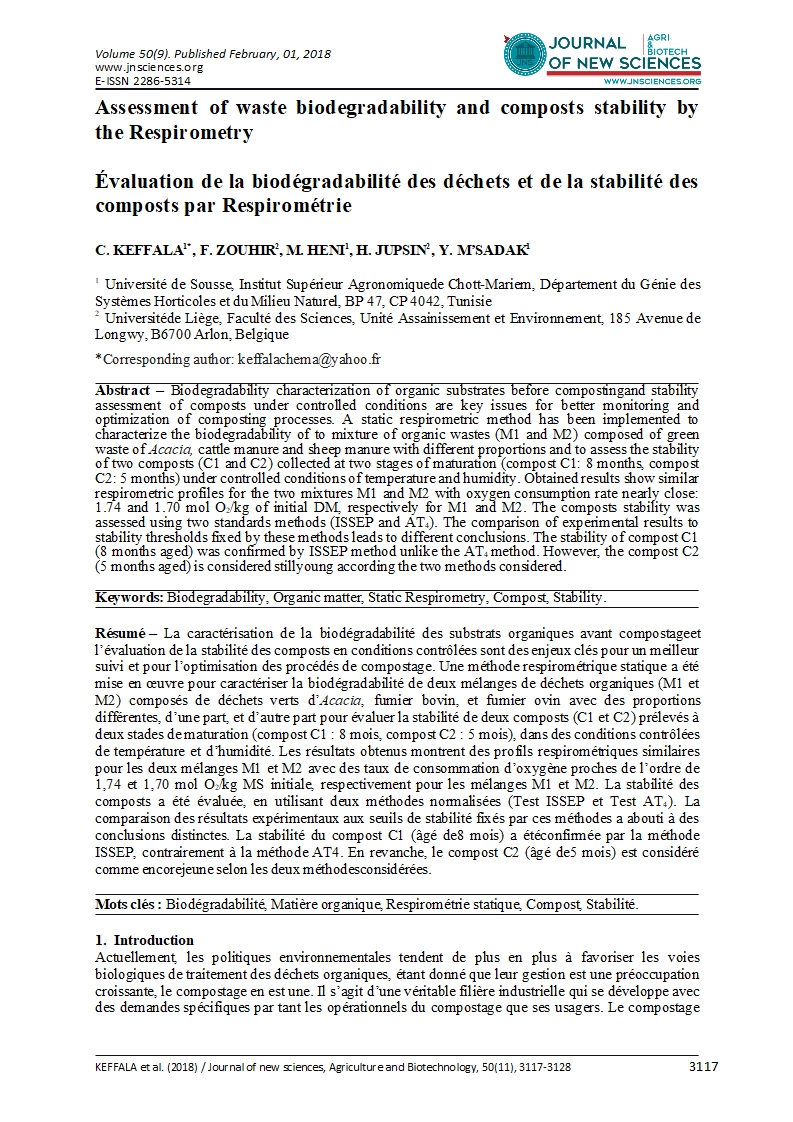
Évaluation de la biodégradabilité des déchets et de la stabilité des composts par Respirométrie
C. KEFFALA1*, F. ZOUHIR2, M. HENI1, H. JUPSIN2, Y. M’SADAK1
1 Université de Sousse, Institut Supérieur Agronomiquede Chott-Mariem, Département du Génie des Systèmes Horticoles et du Milieu Naturel, BP 47, CP 4042, Tunisie
2 Universitéde Liège, Faculté des Sciences, Unité Assainissement et Environnement, 185 Avenue de Longwy, B6700 Arlon, Belgique
Abstract – Biodegradability characterization of organic substrates before compostingand stability assessment of composts under controlled conditions are key issues for better monitoring and optimization of composting processes. A static respirometric method has been implemented to characterize the biodegradability of to mixture of organic wastes (M1 and M2) composed of green waste of Acacia, cattle manure and sheep manure with different proportions and to assess the stability of two composts (C1 and C2) collected at two stages of maturation (compost C1: 8 months, compost C2: 5 months) under controlled conditions of temperature and humidity. Obtained results show similar respirometric profiles for the two mixtures M1 and M2 with oxygen consumption rate nearly close: 1.74 and 1.70 mol O2/kg of initial DM, respectively for M1 and M2. The composts stability was assessed using two standards methods (ISSEP and AT4). The comparison of experimental results to stability thresholds fixed by these methods leads to different conclusions. The stability of compost C1 (8 months aged) was confirmed by ISSEP method unlike the AT4 method. However, the compost C2 (5 months aged) is considered stillyoung according the two methods considered.
Keywords: Biodegradability, Organic matter, Static Respirometry, Compost, Stability.

